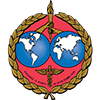Editorial
The Evolution of Postgraduate Orthopaedic Training in Malaysia
 Sharaf Ibrahim Sharaf IbrahimKuala Lumpur, Malaysia |
Dr Abdul Majid Ismail was the first Malayan orthopaedic surgeon to be appointed head of the orthopaedic department in the General Hospital Kuala Lumpur in 1958 after completing his training in the United Kingdom (UK). He had obtained the Fellowship of the Royal College of Surgeons (FRCS) of Edinburgh and the Master of Orthopaedic Surgery (MChOrth) from Liverpool. He then started a programme to establish an orthopaedic department in every state general hospital. Arrangements were made with the University of Liverpool to train the Malayan orthopaedic surgeons who would be assigned to the respective state general hospitals upon their return from the UK [1].
In 1964, the first academic orthopaedic department was established in the University of Malaya with Professor John Francis Silva appointed as the inaugural professor. The University Hospital became the first university hospital in the country in 1967. The Malaysian Orthopaedic Association was also founded in 1967 with Dr Abdul Majid Ismail as the first president. There were only 10 orthopaedic surgeons then [2].
Without a structured residency training programme, the training of orthopaedic surgeons was a lengthy process as trainees had to undergo general surgical training followed by orthopaedic training. In 1976, there were only 30 members of the Malaysian Orthopaedic Association. Change was imminent and had its share of controversy.
In the early 1970s, a Bill was proposed by the College of Surgeons of Malaysia to conduct postgraduate examinations and award diplomas in collaboration with the Royal College of Surgeons of Edinburgh. This was opposed by the Academy of Medicine. The Bill was eventually withdrawn due to the disagreement between the professional societies. The public universities were subsequently given the mandate to conduct the training, examination and award the degrees. Training was in collaboration with the public hospitals [3].
In 1981, Professor Quazi M. Iqbal started the Master of Orthopaedics training programme in Universiti Kebangsaan Malaysia. This was to enable Malaysian orthopaedic surgeons to be trained and certified in a structured four-year training programme. The University of Malaya and Universiti Sains Malaysia followed in 1990 and 1991 respectively.
From 1981 to 1995, trainees spent 4 years in their respective university hospitals except for short rotations in other hospitals. In 1996, the off-campus programme started with trainees spending the first 2 years in public hospitals and the last 2 years in the university hospitals. This was to minimise disruption of services by ensuring that sufficient trainees were available in the public hospitals [4]. Trainees had to find a balance between a busy service in a public hospital and the time for study and research.
From 1981 to 2003, Universiti Kebangsaan Malaysia, University of Malaya and Universiti Sains Malaysia conducted their training programmes independently and had separate examinations. This led to the perception that the standards of training and assessment differed between the three universities. The establishment of a national board of orthopaedics was needed to ensure uniformity and the highest quality of postgraduate training. The Conjoint Board of Orthopaedics was formed in 2003 to oversee orthopaedic training and examinations. Board members consisted of senior orthopaedic surgeons from the universities, Ministry of Health and the Academy of Medicine. The first Conjoint Board of Orthopaedics Part 2 examination was held in 2004. International external examiners were invited for global benchmarking. In the same year, the Ministry of Health started a three-year fellowship programme for all orthopaedic subspecialties in the major public hospitals [5].
The International Islamic University of Malaysia (IIUM) became the fourth university to establish a training programme in June 2008. Universiti Malaysia Sarawak and Universiti Putra Malaysia started their training programme in June 2015.
In recognition of the quality of orthopaedic training, international trainees from different countries have enrolled in the programme. These include Brunei, India, Indonesia, Iran, Iraq, Libya, Maldives, Pakistan, Palestine, Somalia, Sudan, Timor Leste and Yemen.
The Basic Science Examination in Orthopaedics organised by the College of Surgeons and the Conjoint Board of Orthopaedics began in 2010. The trainees are examined in surgical pathology, anatomy, physiology, biomechanics, biomaterials and principles of surgery. The aim of this examination is to ensure that junior doctors who are interested in orthopaedic surgery have acquired the knowledge and skills required for entry into the training programme. In November 2014, the Basic Science Examination in Orthopaedics was accepted by the Conjoint Board of Orthopaedics as the Conjoint Part 1 Examination to replace the part 1 examination of the individual universities.
The Conjoint Board of Orthopaedics became more inclusive when the Malaysian Orthopaedic Association joined in May 2014. The Malaysian Orthopaedic Association has been active in organising and supporting orthopaedic courses and workshops. A cursory glance at the Malaysian Orthopaedic Association website shows that there is at least one course or workshop conducted every month.
The larger number of trainees and funding has resulted in higher quality research and publications. This is evident in the submissions for the annual Mahmood Merican Award for the best research paper by an orthopaedic trainee. Papers shortlisted for presentation are almost always in the field of basic science research. The end point of research is publication. The Malaysian Orthopaedic Journal started publication in 2007 with the aim of encouraging local and ASEAN publications. It is an open access online journal and is indexed in several databases. The Journal receives manuscripts from around the world and has an increasing number of citations.
What are the challenges ahead?
The number of orthopaedic surgeons in Malaysia is still insufficient. Forty to 50 trainees pass the part 2 orthopaedic board examination each year. There are around 700 orthopaedic surgeons in Malaysia serving a population of 30 million people. The orthopaedic surgeon to population ratio of 1:43,000 in Malaysia is far below the British Orthopaedic Association recommended ratio of 1:20,000 for the UK in 2015 [6].
There are more applicants than positions available for orthopaedic training in the country. More public hospitals need to be accredited for orthopaedic training. Trainers need to ensure that trainees have acquired surgical competence after 4 years of training. The benchmark for passing the part 2 examination is at the level of a first-year orthopaedic surgeon in a general hospital.
Surgeons in private hospitals are a valuable resource as trainers. Private hospitals in North America have a long established tradition of training residents and, more recently, in Australia as well [7]. The evidence suggests that training hospitals provide a higher quality of care, achieve higher individual case volumes and have fewer adverse events [8]. Kumpulan Perubatan Johor University College with 23 private hospitals in Malaysia had taken the initiative in 2012 to start a training programme in Otorhinolaryngology, Paediatrics and Radiology. The general surgery training programme is expected to commence this year. The orthopaedic programme is awaiting approval to begin.
Orthopaedic surgeons need to be trained as trainers to improve surgical training. A 'Training The Surgical Trainers' course conducted by the Royal College of Surgeons of Edinburgh was held in Universiti Kebangsaan Malaysia in June 2015.
The learning needs of new surgeons to perform complex surgical procedures has been recognised [9]. New surgeons continue to be mentored by senior surgeons in their respective hospitals in Malaysia. They are encouraged to undergo fellowship training to further develop their skills in a subspecialty.
Conclusion
Orthopaedic training in Malaysia continues to evolve and progress with 3 university hospitals and 19 public hospitals providing training. A paradigm shift has occurred and we await orthopaedic training to commence in the private hospitals.
References:
- Abdul Majid Ismail. An old man remembers : the memoirs of Tan Sri Dato' Seri Dr. Haji 'Coco' Abdul Majid bin Ismail, Dato' Seri Maharaja di Raja Selangor: as told by the old man himself. 2006. The Written Word. Kuala Lumpur.
- QM Iqbal, P Balasubramaniam, AK Abdul-Hamid. Orthopaedic Surgery. In: History of Medicine in Malaysia Vol II. 2010. Univ Malaya Press. Kuala Lumpur.
- Mahmud Mohd Nor. Universiti Kebangsaan Malaysia Faculty of Medicine. In: History of Medicine in Malaysia Vol II. Univ Malaya Press. 2010. Kuala Lumpur.
- Sharaf I. Orthopaedic training in Malaysia 1981-2001: two decades of the masters programme. Med J Malaysia. 2001; 56 Suppl D: 1-2.
- S Ibrahim. Postgraduate orthopaedic training 1981-2010: Thirty years of the masters programme in Malaysia. Malaysian Orthop J. 2011; 5(1):1-2.
- Khan S, Johnston L, Faimali M, Gikas P, Briggs TW. Matching residency numbers to the workforce needs. Curr Rev Musculoskelet Med. 2014;7(2):168-71
- Watters DA, D'Souza B, Guest G, Wardill D, Levy S, O'Keefe M, Crowley S. Training in the private sector: what works and how do we increase opportunities? ANZ J Surg. 2009; 79(3):138-42.
- Yuan Z, Cooper G, Einstadter D, Cebul RD, Rima AA. The association between hospital type and mortality and length of stay: a study of 16.9 million hospitalized medicare beneficiaries. Med. Care 2000; 38: 231–45.
- McKinstry B, Macnicol M, Elliot K, Macpherson S. The transition from learner to provider/teacher: the learning needs of new orthopaedic consultants. BMC Med Educ. 2005; 5(1):17.


















